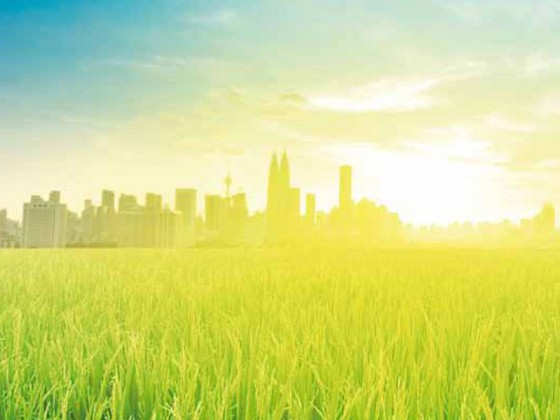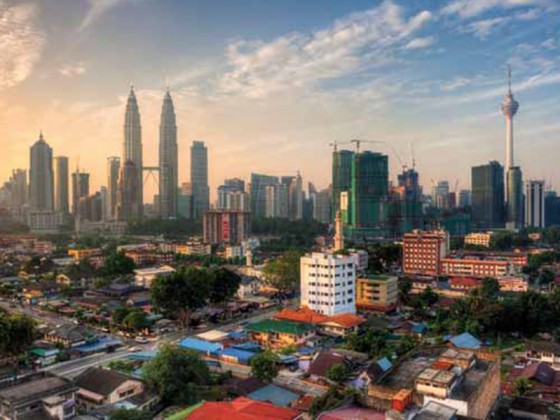by | Mohd Nurul Azammi Mohd Nudri
The Green Technology Foresight 2030 (GTF 2030) is a joint initiative between Ministry of Energy, Green Technology and Water (KeTTHA) and MIGHT to paint alternative futures of Green Technology in Malaysia by year 2030. It is the second of a three-phase programme to develop the Green Technology Masterplan which attempts to answer the question ‘where do we want to go?’.
Through this initiative, MIGHT systematically develops and assesses plausible scenarios on Green Technology development and its impact on the identified sectors which are important to Malaysia up to 2030, and to prioritize the list of green technology areas in line with the National Green Technology Policy Mission and Objectives.
The basis for initial work of GTF 2030 was derived from the stock-take exercise by KeTTHA and The National Green Technology Policy formulated in 2010 for the national context. In terms of global context, considerations are given to both Millennium Development Goals (MDGs) and Sustainable Development Goals (SDGs). Strengthening and updating the information available, MIGHT conducts Horizon Scanning on both external and internal factors that would influence the movement of green agenda in the future.
There are a number of interpretations of green technology. However, KeTTHA as the main stakeholder in this field interpret it as follows:
‘…the development and application of products, equipment and systems used to conserve the natural environment and resources, which minimises and reduces the negative impact of human activities’
It refers to products, equipment, or systems that satisfy the following criteria:
• It minimises the degradation of the environment;
• It has a zero or low green-house gas (GHG) emission;
• It is safe for use and promotes healthy and improved environment for all forms of life;
• It conserves the use of energy and natural resources; and
• It promotes the use of renewable resources.
Source: National Green Technology Policy
The policy on green technology cuts across multiple sectors. The focus is on nine sectors namely energy, waste, transport, manufacturing, water, building, agriculture, information and communication technology (ICT), and forestry.
1. Energy: Energy sources, power generation and the transmission, and distribution of energy.
2. Waste: Municipal solid waste, medical/ clinical waste, hazardous/schedule waste, agriculture waste, and e-waste. This sector derives its green technology areas through the various parts of the waste value chain, such as generation, storage, collection and transport
3. Transport: Transport-land use planning, advanced public transport systems, traffic management, and enforcement and vehicle technology.
4. Manufacturing: Manufacturing processes, input materials and resources, as well as fundamental and applied technologies.
5. Water: Resource management, treatment, storage and distribution of water, water usage, and wastewater treatment and recycling.
6. Building: Design, site-planning and management of building materials, the construction of buildings, operation and maintenance of constructed buildings. A total of eight technology areas were identified under these categories.
7. Agriculture: Input, production, processing, storage or distribution, and consumption of agriculture products.
8. ICT: Green of ICT that focus on energy efficiency of ICT equipment, and Green by ICT that relates to resource efficiency and sustainability attributed by ICT applications.
9. Forestry: Planting and improvement of trees, forest management, production and process of forestry products and endof- life management.
After updating, combining and extending MDGs target for 2030 David Griggs, in his article ‘sustainable development goals for people and planet’, proposed six SDGs: Thriving lives and livelihoods, sustainable food security, sustainable water security, universal clean energy, healthy and productive eco-systems and governance for sustainable societies. The six components have direct impact on the sectors identified for GTF 2030 initiative. Thus, they were used as perspectives in building overarching (contextual / establishing the background) scenarios.
Factors Shaping the Future of Green Technology in Malaysia
More than 20 consultations were conducted with related stakeholders from the nine sectors. More than 300 participants from Government, industry, non-government organisations, and academia gave full support to the initiative by sharing their ideas and perspectives about the future in the context of green activities and technology. The stakeholders were in agreement that the future development of green technology in Malaysia would be influenced by the following factors:
a) Policy specific and integration. Currently there are more than 20 policies related to green technology and sustainability under different ministries and agencies. A serious thought for policy specific and integration is crucial in driving the growth of green technologies.
b) Economic Infrastructure and Facilities. It includes both physical and non-physical infrastructure and facilities. It covers incentives, subsidies, tariff e.g. Feed In Tariff (FiT), RE fund, carbon trade, Offset program (technology transfer, global market penetration and local contents). Physical infrastructure support such as ports, charging station, rail tracks and others to be provided by the Government.
c) Institutional Framework. Green technology approach involves crossed ministerial/agencies and sectors. In the case of Malaysia, this is being coordinated by related ministries such as Ministry of Energy, Green Technology and Water (KeTTHA); Ministry of Natural Resources (NRE); Ministry of Science, Technology and Innovation (MoSTI); and the national level committee – the National Green Technology and Climate Change Council.
d) Cost and Efficiency. Economic development and the expanding world population continue to put pressure on earth’s resources. Mobility of population increases urbanisation and creates new cities. Intensive human activities and energy consumption in urban areas lead to concentration of emissions of air pollutants and generation of waste and heat resulting in multiple adverse impacts on the environment, especially air quality.
e) Energy Prices. Future energy prices are greatly influenced by the global economic performance. The current rate of energy consumed for building operations; the associated greenhouse gas emissions; and the uncertainties in future price of coal, natural gas and electricity can be a cause of concern for policy makers and industry players.
f ) Economic Growth. Apart from consistent progress of economic growth, particularly ASEAN region, regional economies have been gearing up to pursue market integration amidst gloomy global economic outlook.
g) Technology Advancement and Innovation. Technology advancement and innovation plays crucial role in developing knowledge and innovation based economy. Many countries are also focusing on the development of low carbon economy and intensifying their low carbon technology. However, Malaysia is still in the infancy stage. The government of Malaysia strives to gradually establish a market-oriented system for technological innovation and commercialisation as well as proliferating basic and applied scientific research.
h) Climate change. Continuous climate change will have negative affect on the economic development of the nation. It is a global phenomenon that causes natural disasters such as floods, drought and wildfires. However, apart from natural activities such as biotic processes and volcanic eruption, certain human activities such as industrialisation, deforestations and pollution also contribute to climate change.
i) Environmental Degradation. It occurs when resources are depleted due to socio-economical, technological and institutional activities. Forest logging, overuse of fertilizers and mining of minerals are some of the activities that contribute to the environmental degradation and others negative externalities. In addition, the increasing trend of human population, urbanisation and economic growth has become an additional factor towards environmental degradation.
j) Resource Scarcity. Continuing global crisis and scarcity of critical natural resources has hampered the progress of development. Much discussion has focused on the dependency on natural resources for population growth and economic development. Proper management of resources is necessary. Efficient resources usage practices are being encouraged, alternatives for current resources are explored, and models for securing supply are being introduced and implemented to avoid resources depletion.
k) Accessibility and Security. Growing population, coupled with the urbanisation rate, contributes to the high demand for energy, food and water in Malaysia. It is crucial for the rakyat (citizen) to continuously have accessed to these basic needs at affordable rates. Human behavioural patterns and various types of accessibility have broad implications on the economic activities, resource usage, planning and designing of human environments and degradation of natural environment.
l) Awareness, Education and Employment. Public empowerment is seen as an important force in the move towards green practices. Inculcating public empowerment in the society would enhance people’s responsibility where all parties would be involved in environment conservation. People such as decision makers, leaders in industry and the general public would be highly motivated to participate in green practices on any platform, resulting in the emergence of green minded society.
m) Public Health and Risks. Public health and risks refers to all organised measures to prevent disease, promote health and prolong life among the population as a whole. It is an activity to encourage healthy and quality lifestyle. The emergence of demographic trends such as ageing population and acute diseases are the examples of risks facing the country. The risks directly harm the growth of economy, cause low productivity, and threaten food and water security. Measures to positively manage public health and risks are compulsory to support greener environment.
n) Mobility. Mobility management can be described as the management of movement of people and freight that supports and encourages a change in attitude and behaviour towards sustainable modes of transport (walking, cycling, and public transport). The trend with rising mobility would be transformational, impacting lifestyles and opening up new areas of demand for mobility-related goods and services. Important consideration must be given to the fact that the projected increase of income over the next decade would enable more people to travel by motorised vehicles rather than by foot and bicycle.
Future Scenarios of Green Technology
The scenarios are developed using archetype approach which was constructed in three profiles, namely ‘better than expected’, ‘less than expected’ and ‘different than expected’. In order to project the big picture, the overarching scenario or the contextual is painted through six main thematic mentioned earlier.
‘Better than expected’ would mean all sectors would be mobilized to perform green element in all activities throughout their supply chain. This scenario would be difficult to achieve, making it necessary to develop the second scenario – ‘less than expected’ – to anticipate factors that may lead to downside path. The third scenario, ‘different than expected’, would prepare stakeholders for surprising futures (wildcards).
These scenarios are developed to help the interested parties to get the feel of the situation and analyze the sort of opportunities and threats that could arise in the future, and assist them to anticipate the technologies required to capitalized on the opportunities and mitigate, or even, address the threats.










